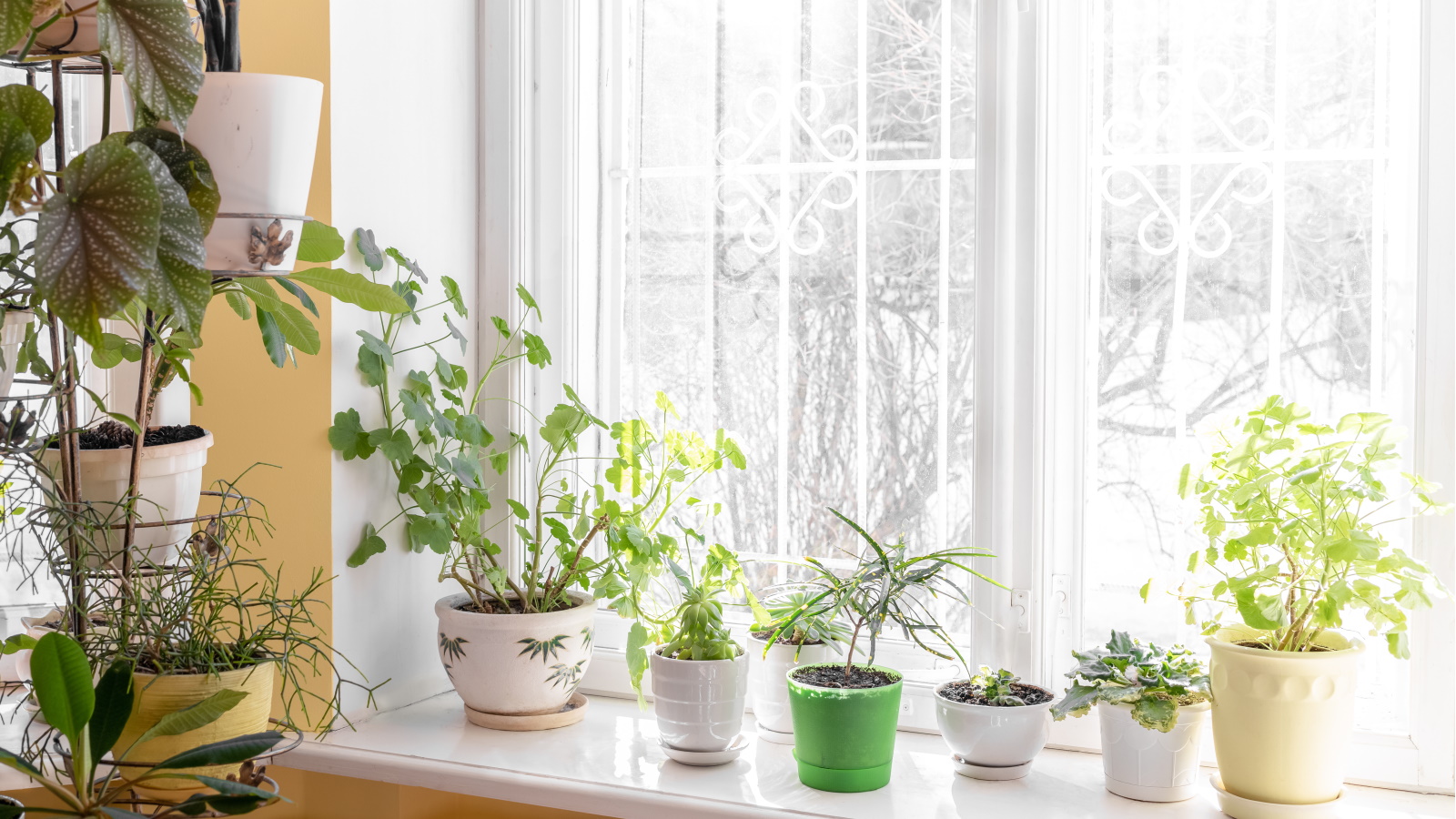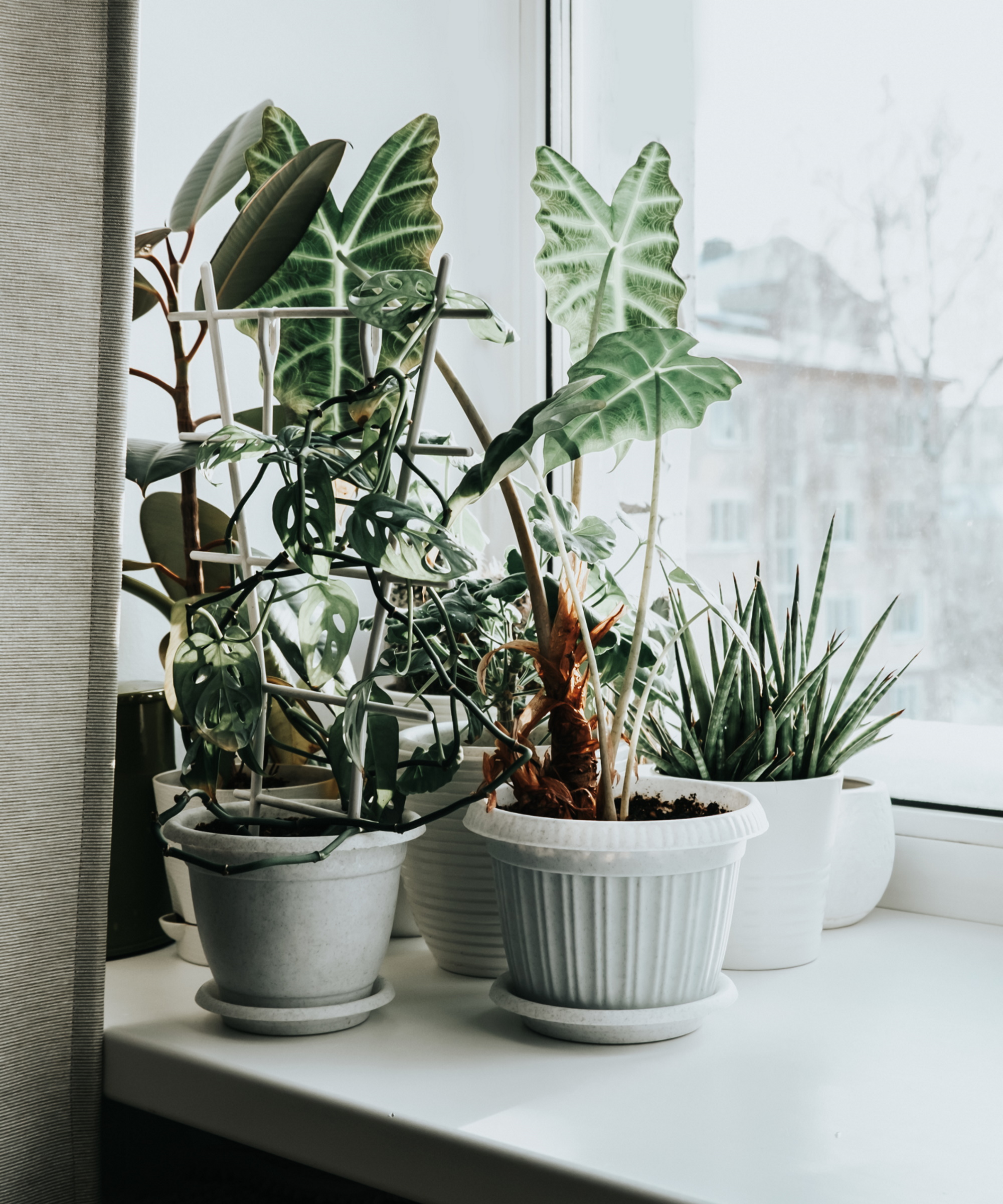
As the outdoor temperatures drop and we retreat from our backyards indoors, it's important to give your houseplants a bit of care to help them through cold and dark days. Neglecting to do so can leave your houseplants exposed to too-cold room temperatures that hinder their health long-term.
If there's only one thing you do to care for houseplants in winter, put precautions in place to protect them from cold damage. It's no surprise that many houseplants can't cope with a lack of warmth, especially because so many popular indoor plants are native to tropical climes. Luckily, keeping houseplants warm is easy to achieve and very low-maintenance.
Those who forget that houseplants get cold just like us often find themselves making winter houseplant care mistakes that result in dying plants. That's why you should try any one of the below methods to give your houseplants a bit more warmth to help them through the winter season.

5 ways to keep houseplants warm in winter
The first thing to understand about winter houseplant care is that each type of houseplant is tolerant to different temperatures. For example, there are a range of cold-tolerant houseplants that can get by with minimal efforts to keep them warm. Nevertheless, it's worth taking on board some of these methods to ensure your houseplants survive the coldest season:
1. Move houseplants away from cold windows

The most obvious way to keep houseplants warm in winter is moving them away from cold spots. Windows are often the biggest culprit in making houseplants cold in winter. Try not to keep any houseplants on north-facing windowsills in particular.
'Unless your apartment is quite modern with double-pane windows that are good insulators, moving plants away from the cold source is one step to stabilizing the temperature around your plant and preventing possible cold stress or frost damage,' says Melvin Cubian from PlantIn.
Of course, there is a challenge in moving plants away from windows during darker days: 'This might compromise the plant’s photosynthesis now that it is away from the light source,' says Melvin. 'Ensure to supplement grow lights for houseplants, which can also offer warmth,' he advises.
Use grow lights in winter to support houseplants with boosted light levels. As Melvin notes, they can also give off some heat.
Other places to consider moving your plants include warm bathrooms and conservatories.
Equipped with 10 Red and 74 White LEDs, this grow light is similar to the full-spectrum sunlight at noon. It has a timer function so you can set it to come on for 4, 8 or 12 hours at a time.
2. Wrap your planters to add a layer of insulation

This is a technique used to protect container plants from winter weather, but it can also benefit indoor plants if they are growing in particularly chilly rooms of your home.
'Wrapping the plant pots with an insulator will keep it warm and cozy during cold spells,' says Melvin. 'All you need is a bubble wrap, burlap net, or a high-end plant cover that conserves heat within, preventing the roots from freezing and protecting it from temperature fluctuations,' he explains.
Providing extra insulation for plant roots is important to protect plants from frost. While houseplant roots are unlikely to freeze indoors, the insulation will still aid root health during colder days and reduce chances of issues like houseplant root rot.
Something to note, however, is that foliage will still be exposed to cold air using this method. It's therefore best to pair it with another solution in this list to prevent your plants becoming stressed.
This roll of burlap fabric is carefully crafted from natural jute fibers which is popular for its strength and durability. It can be used indoors and outdoors, and is easy to cut to your preferred size.
This bubble wrap measures 14ft long, so you can use it for a range of purposes. It's easy to tear and can be used to wrap your houseplant pots to keep them warm in winter.
Use this blanket plant cover to protect plants from freezing temperatures. It has versatile use and can be adapted to a range of outdoor and indoor scenarios to help plants get through winter.
3. Use a heat mat for houseplants

Turning to indoor growing systems is an efficient way to keep houseplants warm in winter. A heat mat in particular is a great option, offering a heat source for houseplants.
'Heating mats are typically used in propagation to speed up the rate of root growth, but it can also keep your plants warmer during the winter months,' explains Raffaele Di Lallo, plant expert from Ohio Tropics.
A heat mat (like this one at Amazon) works by heating up to a temperature you set it. Your plants can then sit on top. As Raffaele mentions, this is typically used for propagating cuttings or when sowing seeds indoors to support seedling development.
'It is only practical for small indoor plants as heating mats won't do a good enough job to warm up the volume of soil in large pots,' Raffaele warns.
4. Use an indoor greenhouse

Another indoor growing system that can help keep houseplants warm in winter is an indoor greenhouse. Just like an outdoor greenhouse, these are designed to create a warm environment for plants and they're small enough to place in your home.
'They block the escape of water vapor and heat while preventing the entrance of the cold ones. This barrier will mimic the greenhouse effect that is especially beneficial for tropical indoor plants like orchids, monsteras, or prayer plants,' Melvin says.
While there are plenty mini indoor greenhouses available online (like this one from Walmart), you can also DIY it with glass jars and plastic tubs, for example.
'A bonus: as the vapors are trapped inside the chamber, worry not about the fungal growth on the walls that is often a problem during winter indoors,' Melvin adds.
This beautiful mini greenhouse has a rustic charm with its wooden finish. Measuring around 4.4 feet, it can be used both indoors and outdoors to protect plants from cold weather.
5. Turn your heating on but don't blast it out

Perhaps the easiest way to keep houseplants warm in winter: put your heating on. It's not just us who thaw out when the heating comes on, houseplants are also appreciative. Nevertheless, there are some things to keep in mind about this method.
'While heating your home helps with the ambient temperature, and that can be good for houseplants that don’t like colder temperatures, it’s important to keep the plants away from the flow of heated air,' warns Julie Bawden-Davis, indoor plant expert at Healthy Houseplants. 'It is very drying in terms of decreasing humidity,' she explains.
Just like keeping houseplants away from cold windows and drafts, you should also take care not to place them next to heat sources. One solution to get the balance right is to increase humidity for houseplants by placing them closer together and using a humidifier (from Amazon).
If you're also concerned about the cost of having heating on, you might be surprised to learn that running heating constantly with a digital thermostat can save you money.
FAQs
How do you save a houseplant that got too cold?
If your houseplant has started to discolor or droop after being exposed to colder room temperatures, you'll be pleased to learn that you can revive houseplants from cold damage. Some of the steps you'll need to take include moving your plant somewhere warmer, pruning away damaged foliage and providing optimal care going forward. Make sure to wrap your plant's pot, place it in an indoor greenhouse or use a heat mat to prevent cold damage happening again.
You might also be tempted to rehome your houseplants somewhere with higher humidity to keep them going through winter. Before doing this, make sure to read up on the best bathroom plants to discover which plants will cope well with the typical conditions of this room. Similarly, some of your plants might benefit as kitchen plants during winter, soaking up the warmth from cooking and family gatherings.







